URL Slug, what it is and why it is essential for SEO + how to optimize it

If your SEO efforts aren’t yielding results, the culprit could be poorly optimized URL slugs. They’re small yet mighty tools that can directly affect your rankings. Let’s explore their importance and learn actionable tips for creating SEO-friendly URL slugs that boost visibility. What is URL Slug A slug is a key component of any webpage URL. It’s the portion that identifies a unique page on your site and appears immediately after the domain name, following a slash. Think of it as the digital “name tag” for your pages, helping search engines and users understand what to expect on the page. URL slugs should be easy to read and accurately describe the content. They come after the directory and before any additional parameters or fragments, remaining dynamic for each unique page while other URL parts, like the domain name, stay consistent. An SEO-friendly URL is designed to provide clarity and context to both search engines and users, helping them understand what a page is about at a glance. These URLs are typically concise, descriptive, and include relevant keywords that reflect the content of the page. The URL slug is the backbone of an SEO-friendly URL. It serves as a clear signal to users and search engines, setting expectations about the page’s content. A good slug is short, easy to read, and provides a precise indication of what visitors will find when they click through. By optimizing your URL slugs, you create pathways that enhance visibility and improve user experience. Why Is a URL Slug Important for SEO? URL slugs may not directly impact rankings, but they significantly influence user behavior and overall experience. A well-crafted slug signals relevance in the search engine results page (SERP) snippet, helping users decide whether your page matches their search intent. Messy, unclear slugs can confuse visitors and make your site seem less trustworthy. Conversely, a clean, descriptive slug builds trust and encourages clicks. Including target keywords in your slug can subtly enhance relevance, even if it’s a lightweight ranking factor, as noted by Google’s John Mueller. In essence, while URL slugs may not dominate search rankings, they bridge user experience and SEO. Crafting user-focused slugs improves navigation, builds confidence, and could boost click-through rates—making them a critical, though understated, part of an effective SEO strategy. Optimizing URL Slug Make them readable. It’s crucial that URL slugs are easy to read and comprehend because they should immediately convey the content of the page. This entails avoiding superfluous characters like numbers or symbols and keeping it brief and direct. A URL slug like contact, for instance, makes it obvious that this is the page to visit in order to find contact details. This is not only simple to read, but it also has the added advantage of being simple to remember, allowing users to return to it at a later time. Keep it brief. It is impossible to have the ideal slug length. Although there are some rules to follow, there is no set amount of characters you should utilize. In general, shorter is preferable. Short URLs are preferred by Google, and if two pages have the same metrics, the shorter one will rank better. The tie-breaking criterion is URL length. Shorter URLs appear more appealing on search engine results pages (SERPs) and are easier for both visitors and search engines to grasp. But remember that descriptive URL slugs are still important. It doesn’t have to be the full length of the title, but it shouldn’t be so brief that the searcher can’t understand the purpose of the page. As previously said, concentrate on choosing keywords that accurately represent the content of the website. It is also possible to abbreviate the slug without sacrificing context by eliminating superfluous stop-words such as a, and, or the. This aids in readability as well. Remove dates and numerals to make it future-proof. It becomes challenging to reuse the page later if you wish to update the content because URL slugs contain numbers and dates. A slug like /10-SEO-tips-in-2016/, for instance, restricts the page’s content to those predetermined characteristics. You will either need to utilize a redirect to a more recent version of the page or allow the material to appear out of date if you wish to add more SEO tips, such as 23 tips for 2022, or if you want to make it more current, such as SEO recommendations for 2022. In any case, it’s preferable to stay away from numbers and dates because it’s not the best scenario. Use just lowercase letters. It is usual practice to use only lower-case URL slugs to prevent duplicate content concerns and 404 errors because everything after the domain can be case-sensitive. Making it as simple as possible for users to change URLs in their browser’s address bar will help you reduce the likelihood that people will create inaccurate connections to your pages. Use hyphens. For clear, legible URL slugs, use hyphens (-) to separate words. Hyphens are an exception and have established standard practice in this specific use-case, even if you should limit the use of other characters and symbols. Additionally, Google suggests using this punctuation. Resources for Improving Your URL Slugs You can identify problems with your URL slugs and optimize them with the following three tools: Yoast SEO Yoast SEO is a well-known WordPress plugin that aids with search engine optimization. It offers modification and optimization options for URL slugs right in the post editor. Thus, there is no need for you to code. This is a really simple method to make sure your URL slugs are optimized from the time you press publish if your website is WordPress-powered. However, you can utilize the tool for your Shopify website as well. Semrush The Site Audit tool from Semrush examines the functionality and health of your website. Additionally, it examines how well your URL slugs are optimized as part of its assessment. Semrush checks your website for problems such as: An excessively lengthy URL, Incorrect formats for the URL
Content Gap Analysis: What Is It And How to Do One In 5 Steps

Any discrepancy between the content your audience desires and what is actually available on your website is known as a content gap. The practice of assessing a content topic to see if there are any chances to cover it more thoroughly is known as a content gap study. Identifying and fixing these gaps might help you generate greater results with your content strategy. Additionally, provide your audience more value. Content gap analysis is the process of identifying topics, keywords, and questions that your target audience is searching for, but your website doesn’t sufficiently cover. It involves analyzing your own content as well as your competitors’ to find opportunities to create new content or optimize existing pages to better meet searcher intent and outrank your rivals. Why conduct a content gap analysis? Identify unexplored keyword opportunitiesYou can find keywords that your rivals are ranking for but you aren’t by using content gap analysis. You may increase your organic reach and attract more qualified visitors to your website by seeing these chances and producing content that is specifically tailored to rank for them. Determine the content of competitors’ weaknesses.Every piece of content is not flawless. In addition to highlighting your competitors’ strengths, content gap analysis highlights areas in which their material is lacking. These results can be used to produce more thorough, worthwhile content that surpasses that of your rivals and better meets the needs of your intended audience. Help with prioritizing and content planningChoosing what to create next can be overwhelming due to the limitless choices for content. A data-driven methodology for ranking content production according to the subjects and keywords with the highest potential for organic traffic and conversions is offered by content gap analysis. Boost your niche’s topical authorityWebsites that exhibit knowledge and authority on a certain subject are given preference by Google. You may increase your site’s topical authority and raise your chances of ranking for related keywords by systematically addressing content gaps and producing in-depth materials on important subjects in your niche. Content gap types Typical content gaps consist of: Topic Gaps Topic gaps take a broad view. This occurs when your material falls short in covering general topics or themes. For instance, content on meal planning, meal prep, repurposing leftovers, and item substitution could be produced by a creative who specializes in learning how to cook on a budget. One thing she hasn’t covered? discounts and coupons. Coupons are the “topic gap” in this case. keywords Gaps Topic gaps inevitably give way to keyword gaps, which happen when your material doesn’t address the terms that prospective buyers use when searching online. Reduced web traffic and, eventually, fewer individuals in your sales and marketing funnels are the results of this disparity. The course teacher, who has now recognized couponing as a significant topic gap, can start looking for keywords to incorporate into her SEO plan by using the previous example. “How to find local coupons in New York,” “how to stack coupons at Target,” “couponing for beginners,” and “what are the best websites for coupons?” are some examples of keywords she may use. Media GapA lack of diversity in the forms of content is referred to as media gap. Text, images, videos, and audio are examples of content types. Since content marketing is a massive and expensive endeavor, organizations frequently concentrate all of their meager resources on just one kind. Regretfully, this may result in a sizable percentage of your clients becoming dissatisfied. While some customers prefer podcasts and audiobooks, others prefer written communication, including blog posts and emails. You’re essentially telling the rest of your audience to keep looking elsewhere for the media type they require if you only concentrate on one or two types. Format GapThe way your content is presented is referred to as format gaps. Email newsletters, SMS text messages, blog entries, e-books, how-to manuals, and templates are a few examples of text content. Format gaps have the same potential to exclude some segments of your audience as media gaps do. For instance, not everyone is interested in reading an email newsletter. An ebook or in-depth blog post is preferred by some. Six Steps to Conducting Content Gap Analysis Finding methods to figure out what kind of contents your audience wants but you aren’t creating right now is essential to performing a content gap analysis correctly. Without a sense of direction, this can be a daunting task. For this reason, we divided the procedure into these six easily absorbed steps. Step 1: Understanding the Buyer’s Journey The buyer’s journey has four stages: Awareness, Consideration, Decision, and Success. Mapping the journey ensures targeted content, effective keywords, and fills content gaps, boosting engagement and sales. Step 2: Conduct Market and keyword research. You can start researching your target market and the terms your audience uses in pertinent searches once you have a firm grasp of your customer journey. There are two steps in this process: Customer research, competitive analysis, and industry trends are all considered forms of market research. Understanding your target market’s demographics and behaviors, the tactics used by your rivals, and the most recent developments and trends in your target market are all part of your objective. You can use the following tools to aid in your market research: Google Trends, Statista, Pew Research Center, or Semrush. Keyword research is the process of identifying specific search terms your target audience uses during their customer journey, especially during the awareness, consideration, and interest stages. Tools that can help with keyword research include: Semrush, Answer the Public , Ahrefs, Surfer SEO or Moz Keep in mind that keywords aren’t limited to search engines like Google and Bing as you continue your keyword research. Additionally, search engines like YouTube, Pinterest, and Instagram employ keywords. Step 3: Audit your existing content A content gap analysis isn’t just about generating ideas for new content; it’s also about auditing your existing library of content to see if anything’s missing. Also, it’s normal for content to become outdated and irrelevant after a
Freelancer vs. Agency: Which Web Design Solution Fits Your Small Business?

Dealing with arrays of problems when running a business is part of the job. Among other things, you need to engage with your teammates, stay revenue-focused, and come up with new ideas. There are a number of things to think about, but one of the most crucial ones is to make sure you’re working with professionals in digital marketing. However, how can you choose between working as a freelancer and an agency? Crucial elements include the professionals you select and the manner you manage your business. To accomplish the same task, you can either hire a freelancer or collaborate with a reputable digital agency like Dgazelle Digital. Each has advantages and disadvantages, and in the end, you should choose the one that benefits you and your company the most. To assist you in making the best decision, we have compiled this thorough information. Why Is The Decision Between Freelancers vs. Agencies Such A Hard Choice? Because there are simply too many choices. You can find millions of results by just searching for “freelancer” or “agency” on Google. There are far too many to sort. Employing marketing experts, whether they work for an agency or as independent contractors, won’t be a uniform choice for every company. Among other things, you will need to think about your target market, sales cycle, your particular business niche, and your established brand voice. The Basics of Freelancer vs. Agency Before deciding if an agency or freelancer is the greatest fit for your company, let’s clarify what each is. A freelancer is a self-employed marketing consultant with a clientele who works part-time. They frequently have extensive backgrounds in a range of domains, such as social media, SEO, ad creation, website development, strategy development, design, and content and copywriting. A digital agency is a bigger group of marketing experts within a more uniform organizational framework. An agency will have a team with a broad range of expertise in several industries and in every aspect of marketing, as these teams frequently comprise professionals with specific skills. To create thorough strategy plans or work on particular client tasks, the firm makes use of the experience of its staff. It won’t be easy to decide between an agency and a freelancer because different businesses will have different needs. Both will actively market their features and advantages in an effort to get your attention. To make an informed choice, you must weigh various factors before selecting the best one for your company. Knowledge and Experience Agency Advantages: Hiring a digital agency will provide you with a group of seasoned professionals with a broad range of experience. They will all understand what works best for your company, so you won’t need to explain your idea to them.Disadvantage: You might not be able to choose your coworkers. A personnel from the digital agency’s roster will be assigned to your business. FreelancerAdvantage: Choose a freelancer who is excellent at fulfilling your particular needs. You can get assistance from generalists or freelancers with specialized knowledge.Disadvantage: It will be challenging to find a single person with the variety of abilities you require, and you will probably need to hire multiple freelancers. Working together with several independent contractors might take a lot of time and Services AgencyAdvantages of working with a digital agency include regular review meetings to gauge progress and your level of satisfaction with their work, as well as a contact and support system to make sure your needs are being met. Generally speaking, agencies have clear procedures for accomplishing objectives and completing tasks.Disadvantage: Depending on their pay, an agency may have certain guidelines for the quality of services they must offer. This can make it challenging to add significant last-minute initiatives to the pipeline or to swiftly change course when necessary. FreelancerAdvantage: Since freelancers work for themselves, their reputation is very important to their success. They will most likely provide exceptional help and ensure that the requirements you set are fulfilled. Since the freelancer wants you to recommend them to other business owners, it is in their best interest to aim for success.Disadvantage: Freelancers are known to occasionally be hard to get in touch with and to abruptly stop working. Additionally, a lot of independent contractors insist on not working under contracts, which could put you in a tight spot if they fail to do the work they promised. Prioritization AgencyAdvantage: Agencies can devote more resources to programs that are of utmost importance. They can handle a greater number of more challenging jobs because they have more employees and committed experts.Disadvantage: Setting priorities for work frequently has a price, and bigger, more lucrative clients will be given priority. FreelancerAdvantage: Freelancers can dedicate more time to your projects because they usually have less assignments than a larger organization. They might decline other clients in order to concentrate on your job if the project is big enough.Disadvantage: One person may take longer to finish tasks due to a lack of resources. When freelancers take on more clients and tasks than they can efficiently finish, they run the risk of taking on more than they can handle. Flexibility and Quickness AgencyAdvantage: You will have greater clarity about the task that an agency performs thanks to their clearly defined partnership structure, and you can dependably plan your business around their capacity to produce thanks to the distribution of hours and resources.Disadvantage: Unexpected projects or problems may interfere with planned schedules, and the agency’s availability may be restricted to regular business hours due to the same structure. FreelancerAdvantage: Since freelancers are more adaptable and can take on urgent projects with little notice or outside of typical working hours, they frequently choose this type of work over traditional business hours.Disadvantage: They frequently charge more for work done on the weekends or in the evenings. Due of their unconventional work patterns, it may also be challenging to set up meetings or get prompt answers to inquiries. Cost AgencyAdvantages: The majority of companies offer well-organized plans that specify exactly what you
Ethical Marketing For Business: Definition, Principles, & Examples
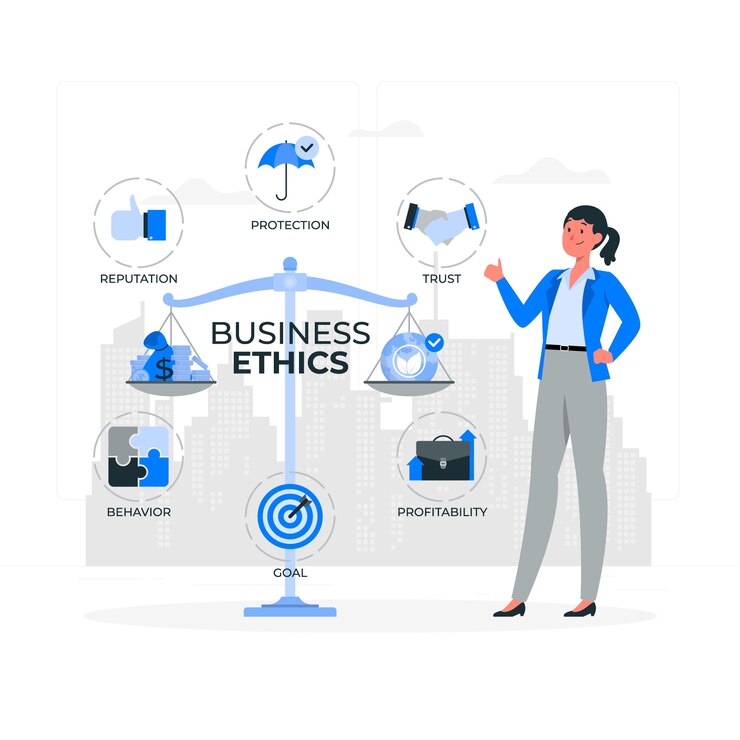
Promoting a brand, business, service, or product in a way that is consistent with your beliefs and values is known as ethical marketing. Businesses must expose their operations and goods in order to practice ethical marketing. They can’t use misleading marketing. Ethical marketing increases customer trust by being truthful and open. Because they won’t be mistreated or deceived, customers purchase with confidence. Honesty, morality, and culturally and socially conscious marketing are encouraged. Consumers receive honest and equitable treatment. Definition of Ethical Marketing A marketing approach that prioritizes ethics and ideals over promotional tactics is known as ethical marketing. By considering what is appropriate and inappropriate for the target audiences or society, it directs marketing strategies. Fairness, honesty, accountability, and confidence in a company’s marketing policies are all encouraged by every facet of marketing ethics. By using ethical marketing, a business benefits customers by supporting social and environmental causes. It builds enduring brand-customer partnerships based on common values and objectives. There are no strict rules when it comes to ethical marketing. The guidelines need to help businesses or brands assess the newest marketing tactics. Importance of Ethical Marketing Since it shields a business from legal issues and damages its reputation, marketing ethics are crucial. It serves as the cornerstone for customer credibility and trust, increasing brand loyalty and guaranteeing a positive reputation. Businesses that adopt ethical practices, such advocating for energy conservation or fair-trade goods, benefit both society and the environment and set themselves up for long-term success and profitability. However, ignoring ethics can have detrimental effects, such as losing clients, facing legal action, and incurring financial fines. Every mistake can go viral in today’s connected digital world, drawing widespread criticism and possibly causing long-term harm to a company’s reputation. The Principles of Ethical Marketing? In the context of marketing, numerous fundamental ethical principles come into play. These core principles regulate how organizations connect customers, establish pricing, express their values, and take responsibility. Developing Ethical Marketing Strategy Providing resources for assessing marketing tactics is known as ethical marketing. It begins with a thorough examination of the company, its clients, and the industry in which it operates. Since ethics are nebulous, a business must determine which aspects of advertising are morally acceptable. The company’s marketing campaign delivery strategy must be agreed upon by marketing experts. The business must concentrate on stating truthful statements or falsely disparaging rivals, etc. The advertisement’s capacity to influence customers must be balanced with its truth. Ethical marketing may draw attention to how a company’s reputation has improved. It can establish a solid rapport with customers. For instance, businesses in the cosmetics sector that embody ethical marketing must make a commitment to their employees, do away with animal experimentation, maximize the use of organic products, refrain from objectifying women or encouraging color biases, etc. Brands should take the following four actions when creating ethical marketing strategies: Consumer Behavior and Marketing Ethics Any brand or organization’s integrity and survival depend on its ability to comprehend and address marketing ethics in consumer behavior. Fundamentally, ethical marketing places a strong emphasis on accountability, fairness, and transparency in all forms of advertising and consumer relations. Promoting ethical marketing strategies aids in establishing long-term client relationships and trust. Conclusion On a concluding note, it is clear that ethical marketing effectively optimizes brand reputation and increases employee and customer retention. It motivates employees to make a difference or apply to social causes. Plus, customers trust a brand that follows marketing and business ethics in its campaigns and channelization. An ethical company promotes responsible marketing, offers a sense of purpose to workers, and adds value to society. Business should audit their current marketing strategy and check how it could be tweaked in line with the principles of ethical marketing. GET IN TOUCH Boost your brand reputation with ethical marketing strategies from Dgazelle. Build trust, drive impact, and grow your business the right way
Discover How Positive Reviews Can Triple Your Website Traffic and Revenue
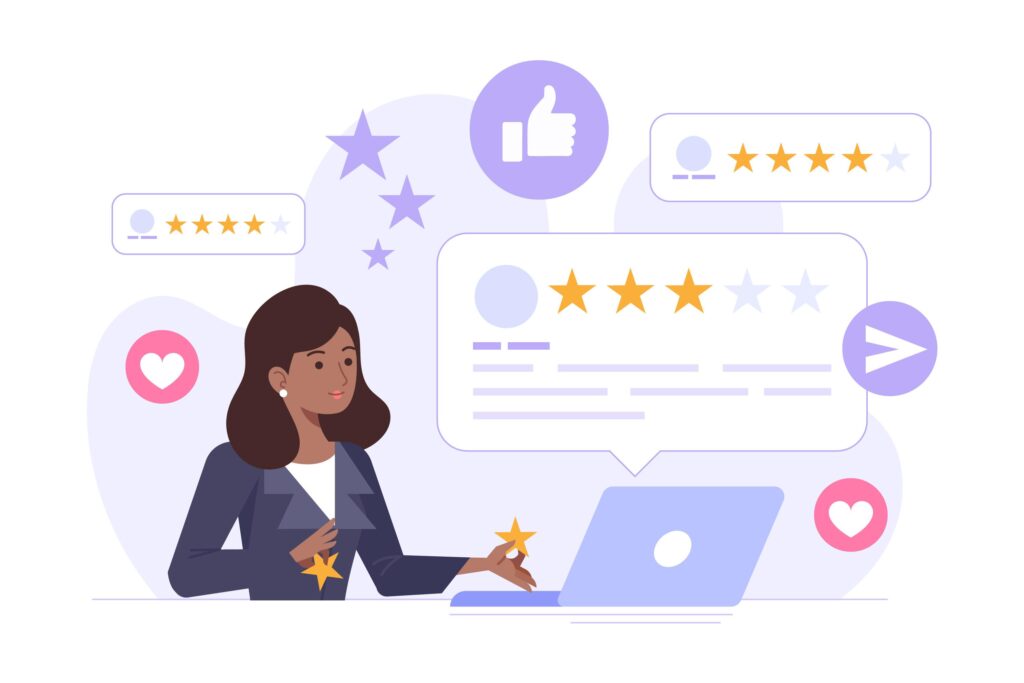
Positive reviews are the goal of any business owner, yet many fail to take use of this feedback. When handled properly, positive reviews may be a very effective tool for increasing the growth of your business.Positive reviews are more than just flattering statements; they are essential to establishing your business credibility and visibility on the internet. Millions of Nigerians will tell you that they like to shop so effort. Naturally, you’ll find yourself in discussions where individuals discuss where they’ve purchased certain items or which online retailers are the greatest. Therefore, having excellent items is no longer sufficient. In addition to having reviews, you should post them publicly for everyone to see. This post will discuss the value of customer reviews, how to get them from your clients, and how using them to increase sales. The Importance of Customer Reviews Since the majority of people shop online and rely on these ratings when making judgments about what to buy, customer reviews are now essential to businesses. It is impossible to overestimate the impact of consumer feedback because it is a potent instrument for your brand. Why should you gather reviews from customers? Best Practices for Collecting Customer Reviews You might find this difficult as a business owner for a few reasons. We know Nigerians, so it’s possible that your consumers are simply stubborn or in too much of a rush. Or perhaps you haven’t made the process simple for them. Here are a few strategies that will work to persuade a consumer to write a positive review for you. Best platforms for customer reviews and how to display them It is now evident that displaying positive evaluations for your company is crucial. You can craft an engaging story that appeals to potential clients and motivates them to interact with your brand by carefully showcasing satisfying customer experiences. Let’s examine these three crucial actions you may do to effectively display favorable evaluations and enhance the perception of your company. To maximize the impact of customer reviews, the best platforms must be chosen for their display. Various platforms serve different functions in the customer journey and cater to different audiences. The top four systems for collecting and displaying customer evaluations are shown below, along with instances of how companies have effectively used them: Google My Business: Google My Business evaluations can greatly increase your company’s visibility and reputation as it serves as a major touchpoint for people conducting online searches. For example, by placing favourable evaluations directly in the search results, a neighbourhood café might draw more customers and establish itself as a favourite among coffee drinkers. Instagram: Leveraging Instagram for sharing customer reviews offers a visual and engaging way to highlight positive experiences. For example, a clothing brand can share customer photos wearing their products, coupled with positive captions or stories, turning satisfied customers into brand ambassadors. Yelp: Well-known for influencing customer choices, Yelp evaluations have the power to increase foot traffic and foster confidence, particularly for nearby establishments, eateries, and service providers. Assume a salon wants to draw in new customers by showcasing its stellar Yelp ratings and reviews on its website or in promotional materials. TripAdvisor: TripAdvisor reviews are a great source of positive feedback for companies in the travel, tourist, and hospitality sectors. To attract tourists searching for a distinctive and well-regarded location to stay, a boutique hotel, for example, can showcase positive ratings on its website. Including reviews on your company website Apart from the aforementioned venues, your own website is an excellent venue for showcasing online reviews. Potential clients can be greatly influenced by including a reviews section or a special testimonials page. Online merchants frequently include reviews on product sites so that customers may evaluate the efficacy and quality of their products directly from other users. For instance, an eCommerce website can show product reviews on individual product pages, giving customers instant social proof. Furthermore, establishing a specific testimonials page provides a more thorough examination of client satisfaction by presenting more thorough comments or success stories. Even in less expected places, like the checkout page, brief customer quotes can reassure buyers about their decisions. This approach not only enriches the user experience but also strengthens the trust in your brand and services, encouraging more conversions and engagement from site visitors. Conclusion For companies trying to boost conversion rates, improve their internet visibility, and establish credibility, positive reviews are crucial. Additionally, you must put a series of tactics into place to motivate consumers to write favorable product evaluations. Utilize the advantages of both channels by incorporating favorable Instagram reviews into your company website using tools like Spotlight. More than just a marketing tactic, promoting and showcasing favorable reviews is a means of building a relationship with prospective clients and establishing a reliable brand image. Put these strategies into action to maximize the impact of favorable ratings and advance your company. Turn positive reviews into powerful growth tools with Dgazelle’s expert digital strategies. Let us help you triple your website traffic and revenue.
Dgazelle Digital Announced as Sponsor and Digital Solutions Provider for 10X Business Conference Abuja 2025

The 10X Business Conference themed UNTAMED is an accelerator for aspiring entrepreneurs, business owners and career professionals, aimed at equipping them with battle-tested strategies, systems and structure for sustainable, predictable and profitable growth with unstoppable confidence
How to Easily Dominate Your Market: The Essential Local SEO Strategies for Small Businesses
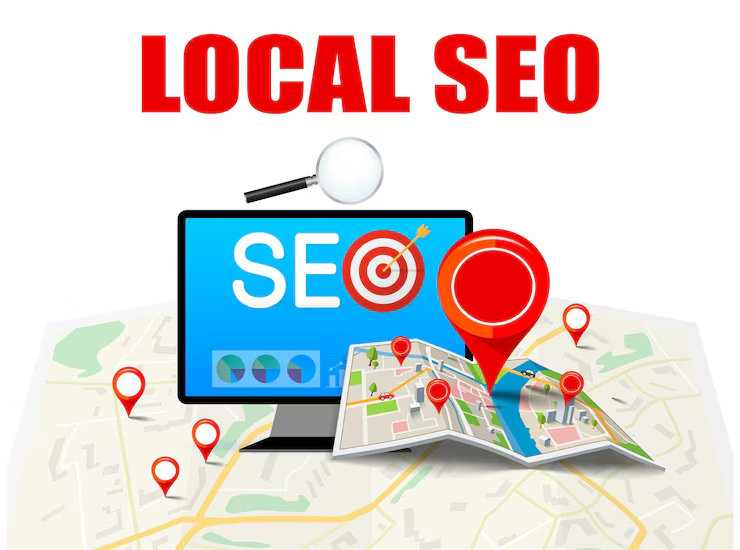
Local SEO is one of the best ways for small businesses and service providers to reach their target audience and become more visible in their community. By optimizing your online presence for local searches, you can stand out in your particular geographic area, connect with local customers, and increase in-store visits or service inquiries. Businesses can greatly increase their chances of ranking high in local search results, including the coveted “local pack,” by using tools like Google Business Profile, local keyword optimization, and customer reviews. Importance of SEO for small business Optimizing your internet presence to draw in more business from relevant local searches is known as local SEO. These searches frequently contain geographic terms like “plumbers in [city name]” or location-specific queries like “near me.” Google reports that 46% of all searches have a local intent, indicating that consumers are actively looking for nearby companies and services. Small companies can engage with these searchers when they are prepared to make a purchase by spending money on local SEO. Local SEO focuses on your particular geographic location, as opposed to general SEO, which aims to increase your website’s visibility on a national or worldwide level. For physical retailers, service providers, and any other company that depends on local clients, this is extremely important. Local SEO Strategies for Small Businesses 1. Optimize Your Google Business Profile (GBP) One of the most important local SEO strategies for small businesses is to optimize your Google Business Profile (GBP, formerly known as GMB). GBP is a free tool from Google that helps you manage your company’s presence on Google Maps and Search. If you optimize your GBP, you can greatly increase your chances of showing up in the local pack (the map and three business listings that appear at the top of Google’s search results for location-based queries) and local search results. To maximize the benefits of your GBP listing: Put Local Keyword Optimization First Local SEO is based on keyword optimization, just like any other SEO technique. You must, however, make sure that your keywords accurately represent both your area and the goods or services you provide for local SEO. The following advice can help with local keyword optimization: Compile and Handle Client Evaluations One important ranking component for local SEO is customer reviews. In addition to improving your reputation, positive reviews tell Google that your company is reliable and pertinent to local searches. Businesses with a lot of good reviews rank higher in Google’s algorithms, thus this is a crucial component of your local SEO approach. Here’s how you handle and promote client testimonials: Create Local References Any reference to your company’s name, address, and phone number (NAP) on other websites is referred to as a citation. By confirming the validity of your company, having regular citations from several reliable websites will help your local SEO. Here are some tips for creating and enhancing local citations: Make Your Website User Experience and Mobile Friendly Since mobile devices account for a sizable percentage of local searches, your website must be user experience (UX) optimized and responsive. Google now employs mobile-first indexing, which means that it ranks and indexes your website primarily using its mobile version. Reduced rankings and lost business can be the outcome of a subpar mobile experience. To make your website mobile-friendly and user-friendly: Produce Locally Targeted Content Websites that offer users useful, pertinent material are rewarded by Google, and this also applies to local SEO. In addition to helping you establish authority, producing content that is especially targeted at your neighborhood increases your chances of ranking for local search terms. Here are some suggestions for locally relevant content: Conclusion Local SEO provides a potent means for small businesses and service providers to establish connections with local clients and expand their operations. You may raise your rankings and increase your visibility to potential clients by making improvements to your Google Business Profile, concentrating on local keyword optimization, collecting client testimonials, and developing a strong local web presence. Recall that local SEO calls for constant attention, tracking, and changes; it is not a one-time endeavor. You’ll be well on your way to controlling your local market if you continue to be involved with your neighborhood and maintain an effective internet presence. Want to outrank the competition in your area? Let Dgazelle handle the local SEO strategies that bring customers right to your doorstep! Our team specializes in driving targeted, local traffic for small businesses through tailored, high-impact SEO techniques. Focus on running your business while we take care of increasing your visibility and dominating your market.
Digital Marketing Automation That Practically Runs Your Small Business for You
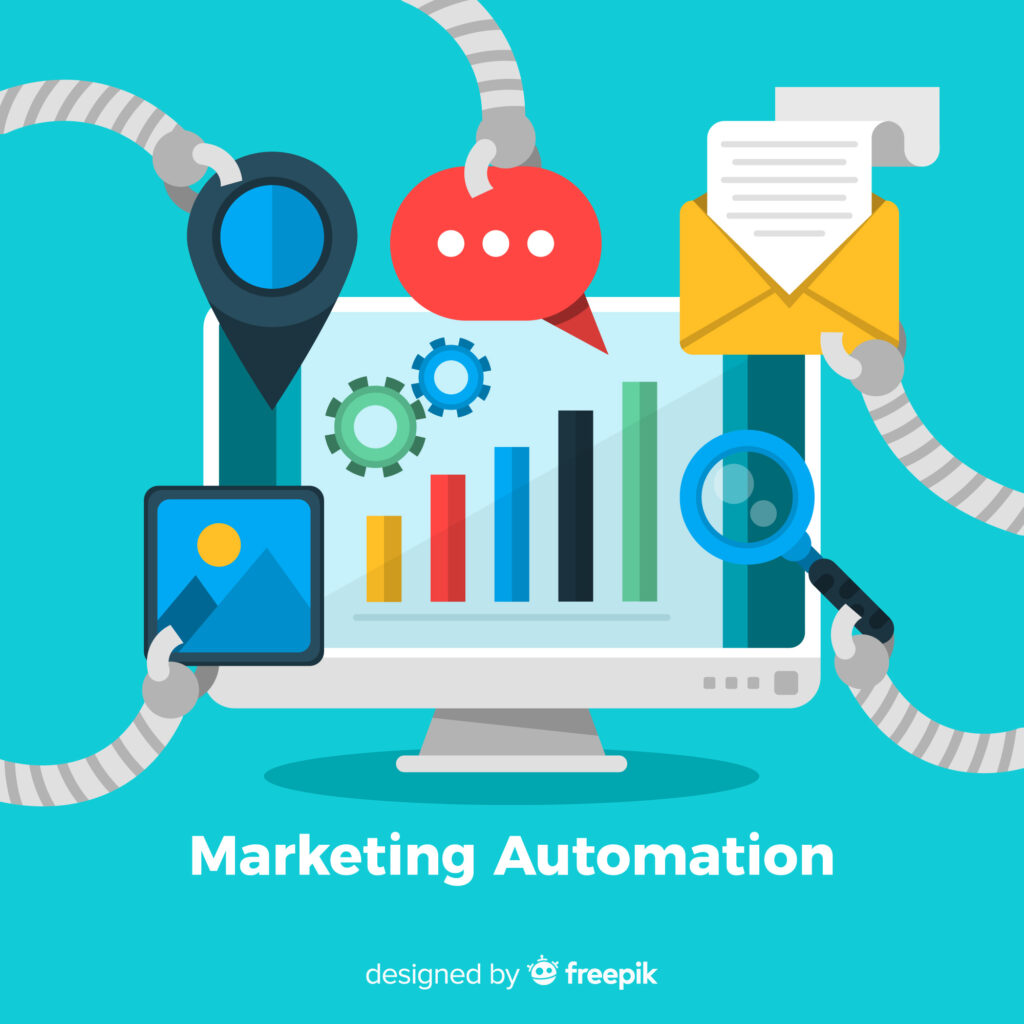
I used to believe that marketing automation amounted to lazy marketing. In my opinion, it was spammy, depersonalizing, and not the proper approach. Since then, I’ve altered my perspective while managing my own small business (and helping to build another business with a small but powerful staff). This is because increasing productivity beyond your physical or mental capacity is necessary when you have few hands available to make things happen. Scott Adams, the creator of Dilbert, once stated: Losers have goals and winners have systems. The truth is smart marketing automation is the key to small businesses’ success in the digital marketing arena. Let’s first define marketing automation before discussing some of the solutions that small and medium-sized businesses can and should use to automate the necessary marketing processes. What Is Marketing Automation In essence, marketing automation enables you to establish back-end business processes that perform tasks that you could complete by hand, even if you would prefer to use your time elsewhere. You have to gradually learn when a task is taking too long (or needs to be done when you’d prefer not to be working) and should be automated, even though I also follow Paul Graham’s Do Things That Don’t Scale (until they are ready to scale) theory. Small business owners already put in far too many hours—believe me, my nerves know. You become indispensable to your company when you run your business and perform numerous tasks that could be automated instead. This causes you to be constantly on the go and obsessively check emails, social media, and other things, which reduces the amount of time you have for your friends, family, and yourself. I’m confident that many of you are all too familiar with this vicious cycle. What is the first step to taking back some of your time? automation—more especially, automation in marketing. Things To Automate In addition to automating personal tasks like paying bills on time, you may automate many of the marketing-related procedures to free up more time for creating effective messaging and audience-reaching tactics. Even while you can’t (and shouldn’t!) automate everything, you can do the following: This is just the start of my list, and today I’ll show you the tools I use to automate many of the tasks I perform on Dgazelle in order to make the marketing and product work. Automation of Email Marketing If you are running a product, email marketing is one of the most crucial and easiest channels to automate. Consider this: what would happen if you didn’t automate the sending of receipts, email correspondence between individuals you are connecting, or even the sending of system problems to your email? Furthermore, who wants to try to recall who has received a certain email if you are involved in editorial email marketing (including drip programs and more)? Basically, without automation, email marketing is nearly impossible to succeed at. What then should I use to automate emails? You can look into some of the less expensive but highly reliable solutions available, such as Malierlite or Zoho. if you have informational products especially. Automation of Social Media There are several techniques to automate social media that will simplify your life while allowing for a personal touch. At Dgazelle, we prefer scheduling material to be shared throughout the day to keep your audience interested and following you because of the value you provide, but we are not fans of automated social media activity (such automatically favoriting tweets on a certain topic). Here are some methods for automating this. I typically use the well regarded Chrome plugin to add content to my Buffer queue whenever I find it on websites, Twitter, Facebook, and other online platforms. You can link several accounts to the Awesome plan and choose which accounts should share that content. You can choose which times of day you want content published within the app. The personal plan is free! while the Awesome plan. cost $10/month Publication and Promotion of Content With the advent of contemporary content management systems (CMS, for those who are unfamiliar), there is no longer any need to manually publish content on a regular basis. We have automation because of this! Making appointments in your CMS You can publish material on a timetable with every CMS that is worth its salt. Why put too much pressure on yourself to finish a piece of material by a certain time on a certain date when you never know when inspiration will strike? Rather, schedule the publication of your content using the scheduling feature of your CMS. Following a publishing schedule is one of the core principles of content marketing. Thus, take advantage of this and plan your material as far in advance as you can. Remember, publishing on a schedule does not also preclude you from writing about breaking or newly relevant topics, but not scheduling content usually sets you up to not publish on a schedule. Your choice! Plugins to automatically promote contents There are further ways to use plugins to automatically promote your contents, specifically RSS. You are obviously developing an email list right? and whether you have a publishing schedule (which you do, don’t you?) If so, this is a fantastic method to stay in touch with those who have specifically indicated that they would like to be notified when you post new material. RSS can still be quite effective, even though I occasionally despise it (and removed it from my own website for a reason). You can use your favorite mailing platform to establish an RSS-driven campaign and Feedburner to burn a feed. Every time you post, you can use an HTML template to automatically send your list RSS emails with a link back to your website. Just ensure the mailing platform you are using have this feature which majority of them do. Reoccurring Billing It is also necessary to establish payment procedures because small businesses operate with fewer employees. You would be negligent if you ignored some of the excellent technologies available
How to identify and Fix 8 Common Technical SEO Issues
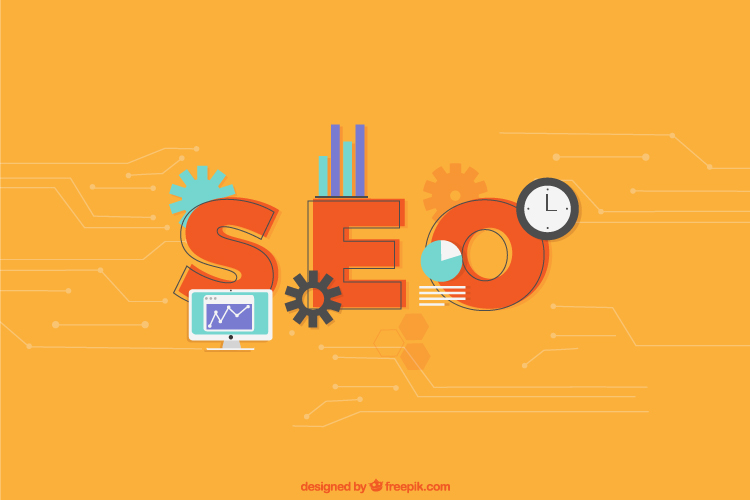
As the foundation for your website’s search engine visibility, technical SEO is an essential part of any digital marketing plan. Although backlinks and high-quality content are crucial, they won’t help if your website is beset by technical problems. We will examine the typical technical SEO problems that website owners face in this blog and offer practical fixes to assist you in successfully resolving them. Understanding Technical SEO It’s critical to comprehend what technical SEO comprises before delving into particular concerns. In order for search engines to efficiently crawl and index your website, technical SEO focuses on improving its infrastructure. This covers things like mobile optimization, secure connections, structured data, site speed, and more. Resolving technical SEO difficulties is crucial for both increasing user experience and search engine rankings. Website Crawling Errors In order to fix crawl issues, which might prevent search engines from correctly crawling a website, technical SEO is essential. explore engine bots, often known as crawlers, use crawling to explore the web for fresh or updated content. These bots collect information to index for search results by following links from one page to another. One of the most prevalent technological problems affecting websites is crawl difficulties. These mistakes happen when some pages on your website are inaccessible to search engine bots, which can stop those sites from being indexed. Broken links, server outages, and improper robots.txt file setups are common reasons for crawl problems. Using Google Search Console is the first step in resolving crawl issues. This effective tool will point up any mistakes that Google finds on your website and offer insightful information about how crawlable it is. You can find troublesome URLs and the particular problems affecting them by looking at the Coverage report. After identifying the mistakes, you can take the necessary steps. To find broken links, perform a site audit using tools such as Ahrefs or Screaming Frog. You can use these tools to identify any broken links that might be causing 404 pages. Once broken links have been found, fix or eliminate them as needed. Check with your hosting provider to make sure your server is dependable and that any downtime is kept to a minimum if the problem is caused by server outages. Duplicate Content In order to solve duplicate content problems, which can perplex search engines and lower a website’s ranks, technical SEO is essential. Duplicate content is another common problem in technical SEO. Blocks of text that exist on several URLs are referred to as duplicate content, and they might cause search engines to become confused about which page should rank for particular queries. Your rankings may suffer as a result, and you may lose out on prospects for natural traffic. Using canonical tags is crucial to addressing duplicate content problems. A canonical tag directs search engines on which URL to index by indicating which version of a page is the “master” version. For e-commerce websites that could have several pages for related products, this is especially helpful. Additionally, think about optimizing specific pages to make each one distinct if you discover that they are inadvertently repeating content. Make sure all of your material is unique and helpful to readers by using tools like Copyscape to scan the internet for duplicate content. To move people and search engines from duplicate pages to the main page, put up 301 redirects if needed. Poor Page Loading Speed Page load speed is greatly impacted by technical SEO, which is important for both search engine optimization and user experience. Page load speed is an important consideration for both SEO and user experience in the fast-paced digital world. Because Google uses page speed as a ranking component, slower websites may have higher bounce rates and worse rankings. When a website loads slowly, users are less inclined to stay on it, which can have a big effect on conversion rates. Optimizing images is the first step in improving website load times. It is crucial to compress photos without compromising quality because large image files can significantly slow down your website. For this task, programs like ImageOptim and TinyPNG can be useful. Additionally, make sure the photos are in the right format. PNG is good for graphics with fewer colors, while JPEG is usually preferable for photographs. Performance can also be improved by using browser caching. A user’s browser will load static resources more quickly on subsequent visits. To specify how long browsers should retain these resources, use cache expiration headers. For repeat visitors, this will speed up load times and enhance the user experience in general. Not Making your website mobile friendly By making sure a website is usable, accessible, and responsive, technical SEO plays a critical part in mobile optimization. It is more crucial than ever to make sure your website is fully optimized for mobile devices due to Google’s mobile-first indexing. A bad user experience brought on by a non-responsive design may result in poorer search engine rankings. The first step in mobile optimization is to use a responsive design. Your website will adjust to various screen sizes thanks to responsive design, giving users the best possible viewing experience on all devices. This procedure can be made simpler by using a responsive framework such as Bootstrap. Regularly testing your mobile usability is also crucial. You may check how well your website works on mobile devices with Google’s Mobile-Friendly Test tool. If problems are found, fix them right away to improve the mobile experience. Think about optimizing touch aspects as well. To facilitate simple navigation on mobile devices, make sure that buttons and links are sufficiently spaced apart. User engagement and retention can be greatly impacted by a flawless mobile experience. Robots.txt In order to instruct search engine bots on which pages to crawl and which to ignore, the robots.txt file is essential. Misconfigurations, however, might cause serious problems by preventing the indexation of crucial pages. The first step in fixing robots.txt issues is to check your file to make sure it isn’t obstructing
Captivate and Convert: How Storytelling Can Infuse Life into Your Brand Voice

Storytelling in marketing has evolved into more than just a trend—it’s a powerful tool that breathes life into your brand. In a world full of noise, a compelling brand voice that connects emotionally with your audience is essential. Through storytelling, brands not only convey their message but also build trust, humanize their offerings, and create lasting relationships. This article explores how storytelling can become the foundation of your brand’s voice, captivating and converting audiences into loyal customers. The Essence of Storytelling What is Storytelling? At its core, storytelling is the art of conveying messages through a narrative, providing context, meaning, and emotional resonance. Since ancient times, storytelling has been essential to human communication, used to pass down knowledge, share experiences, and connect communities. In marketing, it allows brands to build a personality that stands out, making them memorable and relatable. The Psychological Impact of Stories Stories have the unique ability to evoke emotions, a phenomenon rooted in psychology. Our brains are wired to respond to narratives more than to mere facts or statistics. Emotional connections foster engagement and long-term loyalty, making storytelling a strategic asset. This is why you remember a compelling brand story over a standard sales pitch—it taps into cognitive retention, making the message stick. Storytelling as a Marketing Tool Brands like Apple and Nike have mastered the use of storytelling. Apple’s “Think Different” campaign didn’t just sell products; it sold a lifestyle, a mindset. Unlike traditional marketing methods that focus solely on benefits or features, storytelling adds depth and relatability. It transforms customers from passive buyers into participants in a brand’s journey, creating a deeper emotional connection. Crafting Your Brand Narrative Identifying Your Core Message The first step in storytelling is clarity. What do you want your brand to be known for? Your core message should reflect your brand values and be simple enough to resonate across all platforms. Techniques like the “Five Whys” help distill complex ideas into a clear, concise message. Understanding Your Audience Effective storytelling isn’t about what you want to say—it’s about what your audience wants to hear. Understanding your audience’s interests, challenges, and aspirations helps shape your narrative to meet their needs. Using tools like surveys and social listening can provide valuable insights into your audience’s behavior and preferences. Building a Compelling Story Arc Every great story follows a structure: a beginning, middle, and end. This framework can be used to create brand stories that captivate. Introducing relatable characters, conflicts (pain points), and a resolution (your product as the solution) makes your narrative more engaging. Always incorporate your Unique Selling Proposition (USP) to differentiate your story from others. Integrating Storytelling into Your Brand Voice Define Your Brand Voice Your brand voice is the personality you present to the world. It should be consistent across all communication channels. Whether it’s playful, authoritative, or compassionate, storytelling shapes this tone. A consistent brand voice enhances trust and reinforces your message. Channels for Storytelling Measuring the Impact of Storytelling To know if your storytelling efforts are successful, you need to track performance. Key performance indicators (KPIs) such as engagement rates, time spent on page, and conversions can offer insights. Tools like Google Analytics or social media analytics platforms can help measure the effectiveness of your storytelling strategies and refine them over time. Common Storytelling Frameworks The Hero’s Journey This classic framework, made famous by mythologist Joseph Campbell, is used by brands like Apple and Nike. In this model, the customer is the hero, and your brand acts as the mentor or guide, helping them overcome obstacles and achieve their goals. Emotional Storytelling Emotion is a key driver of decision-making. Brands like Coca-Cola use emotional storytelling to evoke feelings of happiness, belonging, or nostalgia. When you create a story that resonates emotionally, it leads to a deeper connection with your audience. The Problem-Solution Framework This approach focuses on identifying the pain points of your audience and positioning your brand as the solution. Case studies are an excellent way to showcase this framework in action, demonstrating how your brand solves real-world problems. Challenges and Missteps in Brand Storytelling Overcomplicating the Story One common mistake brands make is making their narrative too complex. Clarity is key in storytelling. Simplify your message so it’s easy to understand and emotionally engaging. Ignoring Audience Feedback Your story should evolve with your audience. Gathering and acting on audience feedback is crucial for refining your narrative. Mechanisms like online reviews, social media polls, and direct engagement help keep your story relevant. Neglecting Authenticity Authenticity is non-negotiable. Audiences can easily spot when a brand is being disingenuous, leading to a loss of trust. Staying true to your brand’s values ensures that your stories resonate deeply and foster loyalty. Conclusion Storytelling is more than just a marketing tool; it’s the lifeblood of your brand voice. By crafting compelling narratives that align with your audience’s values and experiences, you can build a stronger, more authentic connection with them. The impact of an emotionally resonant story far outweighs that of a mere transactional message. Whether you’re just starting to build your brand’s story or refining an existing one, the power of storytelling will help you captivate, engage, and ultimately convert your audience. GET IN TOUCH Are you ready to infuse life into your brand through storytelling? Let’s work together to craft a narrative that captivates and converts. Reach out today for a free consultation on how to maximize the impact of storytelling in your marketing strategy.

